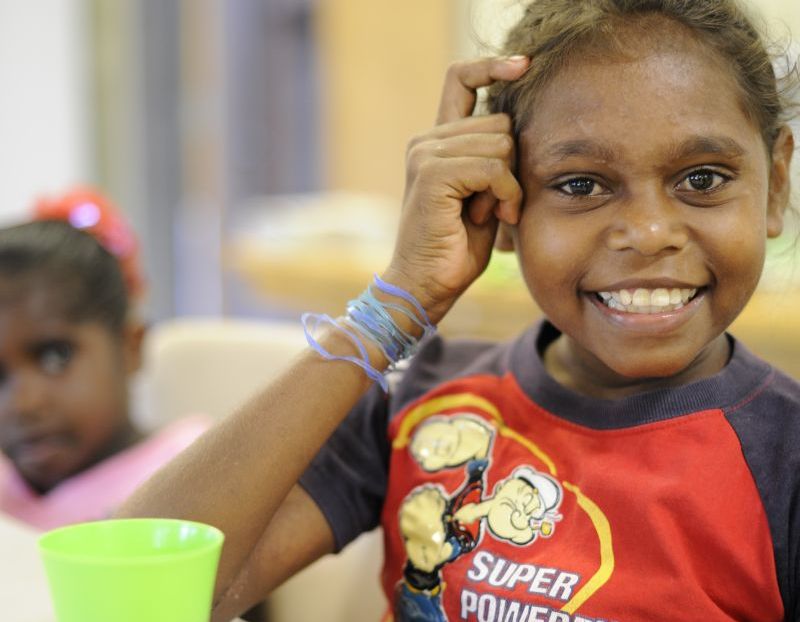Australia
Indigenous Australia
Poverty is as real in this country as it is in developing countries. And it’s Australia’s Indigenous population who suffer the effects of this poverty most. While most Australians are living longer than ever before, Indigenous Australians are dying almost 17 years before other Australians.
Oxfam Australia is committed to working with Indigenous Australians to improve their health and wellbeing.
Indigenous youth
Aboriginal and Torres Strait Islander peoples are a young population with a median age of 20.5 years compared to 36.1 years for the non-Indigenous population. We work with young Indigenous men and women to:
- Develop their leadership capacity
- Support youth-focused initiatives that strengthen cultural identity, responsibility and rights
- Develop Indigenous youth networks in Australia and internationally
- Take greater control over their lives and actively engage in their communities and the wider society
Our youth participation program supports young Indigenous people to take part in Oxfam International Youth Partnerships (OIYP), a global network of young leaders working for positive and lasting change in their communities.
Health and wellbeing
Indigenous Australians die up to 20 years before other Australians, They experience high levels of chronic illness, preventable diseases, mental and physical disability which results in a reduced quality of life.
We work to develop the social and emotional wellbeing of Aboriginal and Torres Strait Islander communities by strengthening the governance, management systems and policy work of Aboriginal Community Controlled Health Services and other Aboriginal health organisations.
For example, we have been contracted by the Department of Health and Ageing to run the Gulf Regional Health Service in north-west Queensland. This service takes a community development approach to improve the health and wellbeing of Aboriginal people in the Gulf region, particularly in the communities of Mornington Island, Normanton and Doomadgee.
Self-determination
We believe that Aboriginal and Torres Strait peoples must have an effective voice and opportunities for genuine participation in all decisions affecting their lives. We:
- Educate Aboriginal community members and organisations and others about human rights-based approaches to development
- Pressure the Australian Government to address the systemic issues that keep Aboriginal and Torres Strait Islander peoples in poor health and poverty
- Work to improve public understanding of and support for Indigenous People’s rights
- Support Indigenous advocates at local, regional, national and international levels
- Work to ensure that the voice of Indigenous people is reflected in services for Aboriginal communities
- Train Indigenous organisations in areas such as marketing, monitoring and evaluation, communications and policy development
An example of work we support includes the diplomacy training program which equips Indigenous leaders with advocacy and lobbying skills and an understanding of the international human rights framework.
Gender
Oxfam Australia is committed to addressing the different issues faced by Indigenous Australian women and men and to creating opportunities for their voices to be heard. For example, we work with the Yorgum Aboriginal Corporation to help provide a culturally safe healing environment with programs addressing child sexual abuse, family violence and community development.
Learn more
Find out more about our work with Indigenous Australians and the Close the Gap campaign.

Fast facts
- Population:
- 517 000 (2006 est) 2.5% of the Australian population
- Aboriginal
- 463,700 (90%)
- Torres Strait Islander
- 33 300 (6%)
- Aboriginal and Torres Strait Islander
- 20 100 (4%)
30% of Indigenous Australians live in NSW, followed by 28% in QLD, 14% in WA and 12% in NT
32% of Indigenous Australians live in major cities, 43% in Regional areas and 24% in remote or very remote
Indigenous child mortality (0 to 4 years) is four times the non-Indigenous rates
In 2006, half the Indigenous population was aged 21 years or less
Source: SCRGSP (Steering Committee for the Review of Government Service Provision) 2009, Overcoming Indigenous Disadvantage: Key Indicators 2009, Productivity Commission, Canberra
